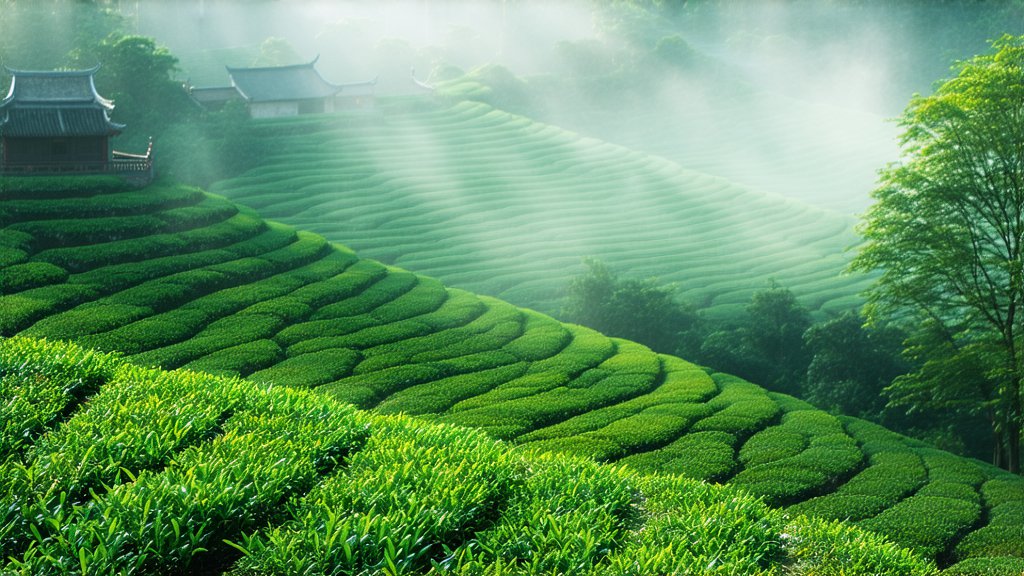
In the lush landscapes that cradle the shores of West Lake in Hangzhou, China, there lies a treasure so profoundly tied to both the land and its culture that it transcends mere beverage status - Dragon Well, or "Longjing" in Mandarin. This iconic Chinese green tea, with its slender, jade-hued leaves and chestnut aroma, is not just a drink; it's an experience, a tradition, and a testament to centuries of tea cultivation mastery. As we embark on this exploration, let us delve into the rich tapestry of Dragon Well's history, varieties, meticulous crafting process, and the art of its appreciation.
A Historical Brew: The Origins of Dragon Well
The tale of Dragon Well tea begins in the early Qing Dynasty, around 1684 AD, though its roots likely extend much further back into ancient Chinese tea lore. Legend has it that the tea was named after a well located near the production area, which was believed to be the dwelling place of a dragon in the Heavenly Court. When Emperor Kangxi of the Qing Dynasty tasted this exceptional tea during one of his tours, he was so enchanted by its quality that he decreed it as the "Imperial Tea," thereby elevating its status and ensuring its preservation for generations to come.
Varietals: A Symphony of Flavors
Dragon Well tea primarily comes from the Camellia sinensis var. sinensis plant, but within this species lie subtle variations that contribute to the unique characteristics of each harvest. The most celebrated variety, known simply as "Xihu Longjing" (West Lake Dragon Well), is grown in the designated West Lake District of Hangzhou. Other notable mentions include "Meitan" and "Pingyang Special," each reflecting the terroir of their respective regions—Meitan from Zhejiang Province and Pingyang from Wenzhou, respectively. These differences in soil composition, altitude, and climate nuance the flavor profiles, making every cup of Dragon Well a journey through China's diverse landscapes.
Crafting the Perfect Cup: The Art of Dragon Well Production
The magic of Dragon Well lies not only in its origins but also in the artisanal methods employed to transform fresh leaves into the dried green tea we cherish. The process is a harmonious blend of tradition and precision:
-
Hand-Picking: Only the tenderest buds and youngest leaves are selected, typically in early spring during the Qingming Festival (Around April 5th). This ensures optimal flavor and aroma.
-
Withering: Freshly picked leaves are spread out thinly to lose moisture, allowing enzymes to initiate subtle chemical changes that enhance the tea's complexity.
-
Fixation: Unlike other green teas that may be steamed, Dragon Well undergoes a high-temperature pan-frying process. Masters skillfully manipulate the leaves in woks heated to approximately 200°C (392°F), a technique that halts oxidation while preserving the tea's vibrant color and fragrance.
-
Shaping: The hallmark of Dragon Well, its flat and sword-like appearance, is achieved through a series of pressing and shaping maneuvers. Skilled hands shape the tea into its distinctive form, resembling a dragon's tail or well water, hence the name.
-
Drying: Finally, the shaped tea is gently dried to remove any remaining moisture, ensuring stability for storage and transportation without compromising flavor.
The Dance of Senses: Appreciating Dragon Well
To truly appreciate Dragon Well tea is to engage all senses in a meditative ritual:
-
Visual Appeal: Observe the dry leaves, noting their slender, jade-green hue and the uniformity of their shape. Upon infusion, watch as they unfurl gracefully, revealing a dance of emerald hues within the water.
-
Aroma: Inhale deeply before sipping. Dragon Well exudes a delicate, chestnut-like aroma with hints of floral sweetness and vegetal freshness, a scent that transports you to misty mountaintops at dawn.
-
Flavor Profile: Take your first sip slowly, allowing the tea to coat your palate. You'll experience a harmonious balance of umami, sweetness, and a slight astringency, followed by a lingering aftertaste that speaks of its pure origins.
-
Texture: Feel the smooth, almost silky mouthfeel, a testament to the careful processing that preserves the tea's natural essence.
-
Emotional Connection: Beyond the physical sensations, savoring Dragon Well encourages mindfulness and reflection, connecting you to centuries of tea culture and the hands that have lovingly crafted each cup.
In conclusion, Dragon Well tea is more than just a variety of Chinese green tea; it embodies the spirit of China's rich tea heritage, the artistry of traditional tea-making, and the timeless pursuit of harmony between nature and humanity. As you raise your cup, remember that you are partaking in a ritual that has been cherished for generations, a bridge that links past and present, and a reminder of the simple yet profound pleasure found in a well-brewed cup of tea.